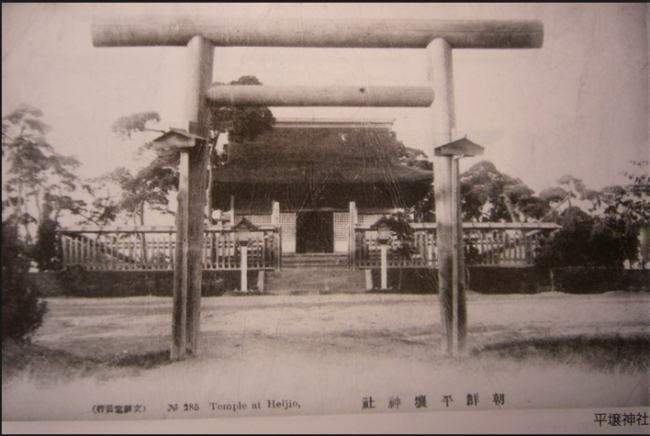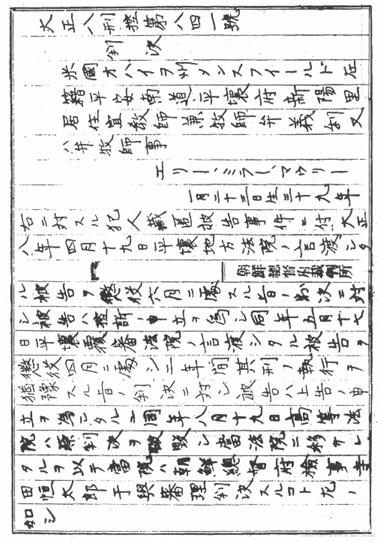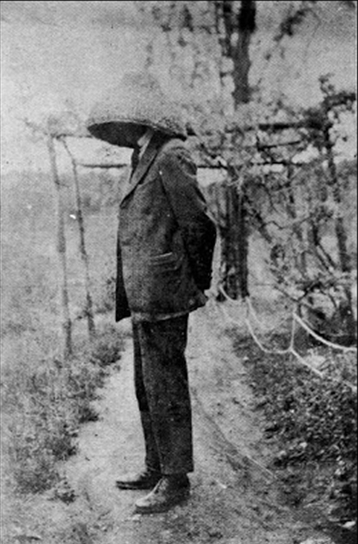[Foreigners Who Loved Korea 15] Mowry, ardent supporter of Korean independence
By KH디지털2Published : April 25, 2016 - 17:54
Eli Miller Mowry was born Jan. 23, 1880, as the third of nine children to Samuel Mowry and Mary Miller in a suburb of Bellville, Ohio.
He participated in the Student Volunteer Movement for Foreign Missions in his college years and resolved to become a missionary. After being ordained in May 1905 by the American Presbyterian Church of Worcester, he and his wife came to Korea on Oct. 2 and mainly worked in the Pyongyang Mission chapter.
After learning Korean, he taught general biology, genetics, cytology, and agriculture at Sungsil University while also acting as principal of Sungin and Sungdeok schools in Pyongyang. To Mowry, a supporter of Korean education and independence who remained in Korea even after its schools were closed, Korea was not only just a place to missionize but a fellow traveling companion.
Pyongyang and the March 1st Movement
At 1 p.m. on March 1, 1919, the bell tolled at Pyongyang’s Jangdae District Church. Taking this as a signal, over 1,000 members of the Pyongyang Presbyterian Church Association gathered in the gymnasium next to Sungdeok School and commenced the memorial worship service for King Gojong and declaration of independence ceremony.
He participated in the Student Volunteer Movement for Foreign Missions in his college years and resolved to become a missionary. After being ordained in May 1905 by the American Presbyterian Church of Worcester, he and his wife came to Korea on Oct. 2 and mainly worked in the Pyongyang Mission chapter.
After learning Korean, he taught general biology, genetics, cytology, and agriculture at Sungsil University while also acting as principal of Sungin and Sungdeok schools in Pyongyang. To Mowry, a supporter of Korean education and independence who remained in Korea even after its schools were closed, Korea was not only just a place to missionize but a fellow traveling companion.
Pyongyang and the March 1st Movement
At 1 p.m. on March 1, 1919, the bell tolled at Pyongyang’s Jangdae District Church. Taking this as a signal, over 1,000 members of the Pyongyang Presbyterian Church Association gathered in the gymnasium next to Sungdeok School and commenced the memorial worship service for King Gojong and declaration of independence ceremony.

In the latter ceremony, a large Taegeukgi, or Korean national flag, was hung on the dais and the president of the Presbyterian Church, Rev. Kim Seon-du, led the proceedings. The missionary Jeon Il-seon read aloud the Declaration of Independence sent from Seoul and an address was delivered by Gang Gyu-chan, the minister of Sanjeong District Church.
The teachers at Sungdeok and Sunghyeon schools soon proceeded with “manse” demonstrations and the students waved the Taegeukgi they had prepared, split into three groups, and headed off for Namsan District Church. They joined up with the Methodist Church demonstration group and the Cheondoist demonstration group which had set off from Seolamri Cheondoist Church.
The demonstrations, which began in the midst of severe repression by the Japanese colonists, continued intensely until March 5. The Japanese police and military arrested the leaders of the demonstrations on the afternoon of March 2, and over 400 civilians were arrested by March 8. Of these, 154 were subject to lashes or summary justice and the 48 who were judged as leaders of the movement were handed over to the Pyongyang District Court Inspectorate.
Mowry and his fellow missionaries went to the site of the demonstrations, taking the lead in protecting them, and sheltered the students from police in his own house. However, as the principal of Sungdeok School and a concurrent Sungsil University professor, the Japanese suspected that he was one of the de facto leaders of the protests.
On April 4, he and S.A. Moffet were arrested in a search of their houses. Moffet was released the next day, but Mowry was indicted on charges that he had hidden Gil Jin-kyong and Yi In-seon, students from Sungsil Middle School, and Sungil University students Yi Bo-sik and Kim Tae-sul.
On April 19, Mowry received a six-month prison sentence at the Pyongyang District Court, and he was released on bail. However, claiming that he had only treated the students as normal guests and was innocent of the intent to “harbor criminals,” he appealed the sentence and on May 17, the Pyongyang District Court sentenced him to four months of imprisonment with a two-year suspension.

Mowry appealed again, and on Aug. 18, the Superior Court reversed the previous sentence and transferred the case to the Gyeongsong (Seoul) Court of Review. In the end, the Gyeongsong Court of Review fined him 100 won. In case the fee could not be paid in full, Mowry was to be detained for 20 days in a workhouse. Although he appealed yet again, the Superior Court dismissed the appeal on Dec. 4 and upheld the sentence.
School closed due to Shinto worship boycotts
At the middle school principals’ meeting of South Pyeongan Province on Nov. 14, 1935, the South Pyeongan provincial governor proposed worshipping first at Pyeongyang’s Shinto shrine and then convening the meeting. G.S. McCune, the principal of Sungsil School, Jeong Ik-seong, the deputy principal of Sungui Girls’ School, and H.M. Lee, the principal of Sunan Uimyeong School, refused on the grounds that not only did no such precedent exist, but was against the Christian doctrine.
On Jan. 18 the following year, McCune argued not only would he himself not worship at Shinto shrines, but he could not force his students, and submitted a letter saying he could not resign due to the decision of the board of directors. The same day, he was dismissed as the principal of Sungsil School was and was also dismissed from his position as the principal of Sungsil Vocational School on Jan. 20. Mowry was appointed as McCune’s successor at Sungsil Vocational School and took office that same March.
The American Presbyterian Mission did appoint successors through the schools’ boards of directors for its affiliated principals, who were expelled over the issue of worshipping at Shinto shrines, but the ultimate decision on whether to close its schools was shelved until that year’s regular annual missionary conference.
Finally, during the annual conference in Seoul from June 25 to July 2, 1936, the “Resolution to Withdraw Education” was put to a vote, and a vast majority of 69 to 16 voted in favor of the resolution. The Japanese sought the mission’s “educational retreat,” that is, their withdrawal from education. What they desired was that the mission donate or sell off its assets at cheap prices to the Japanese authorities or Koreans who were easy to manipulate.
The American Mission decided to uphold the 1936 withdrawal policy in its September 1937 meeting. The Presbyterian Mission, following the comments of J. Cordon Holdcroft and its executive committee, enacted the policy of closing the schools and not transferring its property. The policy, however, not only met with opposition from missionaries and Koreans who wanted the schools to continue their operations, but also could not be accomplished due to interference of the Japanese.

After a series of twists and turns, only three schools, Sungsil Vocational School, Sungsil Middle School, and Sungui Girls’ School, submitted requests to close on Oct. 29 and Nov. 11, 1937, respectively. However, the governor general rejected the requests on Nov. 19, saying that the reasons for closing the schools were ambiguous, the policies of dealing with enrolled students vague, and noted other problems in the formalities of the request.
The reason for the rejection was that it violated the revised regulations for private schools seeking authorization by the governor general. The ultimate goal of the governor general was to shift the responsibility of closing the schools onto the missionaries while profiting from the donation or leasing of the building sites.
In the end, the missionaries hinted at an intention to negotiate leasing the buildings if the schools were closed down, and again submitted requests on Dec. 2 to close down the three schools to the Academic Affairs Department of the Pyeongan municipal authorities, and the Academic Affairs Department of the South Pyeongan provincial authorities accepted the request on Dec. 8.
Afterward, the mission commenced negotiations with the educational authorities of South Pyeongan Province, and on Jan. 21, 1938, a compromise was made with the founders of the three schools after a meeting with the mission’s executive committee and receiving permission from the mission headquarters.
The executive committee members resolved to have the authorities take responsibility for the issue of the schools’ employees and pupils and to lend their school building to the authorities if they quickly took care of the request to close the school. The provincial authorities also agreed to resolve the issue of the employees and students if they were allowed to borrow the school buildings.
The executive committee notified this to mission headquarters. On Feb. 22, the headquarters replied, entrusting the head of the committee, Herbert Lord, with the task of leasing the school buildings. Thus, Sungsil Middle School, Sungsil Vocational School, and Sungui Girls’ School held their last commencement ceremonies on March 3, March 4, and March 11, respectively. The order formally authorizing the closing of the three schools on the last day of March was issued to the school founder’s representative, Mowry and R.O. Reiner, on March 19, 1938.
After Sungsil School closed, Mowry remained missionizing in Pyongyang, returning to the U.S. in November 1940 at the recommendation of the U.S. Consulate in Seoul. After liberation, he entered and worked in Korea again, retiring and returning to the U.S. in January 1949.
Mowry was recognized by the Korean government for his services, receiving the Order for National Foundation Merit on March 1950 and the Order of Independence Merit in 1968. Mowry spent the rest of his days in Columbus, Ohio, and died on Oct. 17, 1971.
Kim Seung-tae
Research Committee member
Institute of the History of Christianity in Korea
In Korea’s turbulent path toward independence and nation building, there were foreign nationals who stood steadfastly by the Korean people, although their contributions have been largely overshadowed by those of Korean patriots. The Korea Herald, in partnership with the Independence Hall of Korea, is publishing a series of articles shedding light on these foreigners, their life and legacies here. This is the 15th installment. -- Ed.








![[Graphic News] More Koreans say they plan long-distance trips this year](http://res.heraldm.com/phpwas/restmb_idxmake.php?idx=644&simg=/content/image/2024/04/17/20240417050828_0.gif&u=)
![[KH Explains] Hyundai's full hybrid edge to pay off amid slow transition to pure EVs](http://res.heraldm.com/phpwas/restmb_idxmake.php?idx=644&simg=/content/image/2024/04/18/20240418050645_0.jpg&u=20240419100350)





![[From the Scene] Monks, Buddhists hail return of remains of Buddhas](http://res.heraldm.com/phpwas/restmb_idxmake.php?idx=652&simg=/content/image/2024/04/19/20240419050617_0.jpg&u=20240419175937)

![[KH Explains] Hyundai's full hybrid edge to pay off amid slow transition to pure EVs](http://res.heraldm.com/phpwas/restmb_idxmake.php?idx=652&simg=/content/image/2024/04/18/20240418050645_0.jpg&u=20240419100350)

![[Today’s K-pop] Illit drops debut single remix](http://res.heraldm.com/phpwas/restmb_idxmake.php?idx=642&simg=/content/image/2024/04/19/20240419050612_0.jpg&u=)